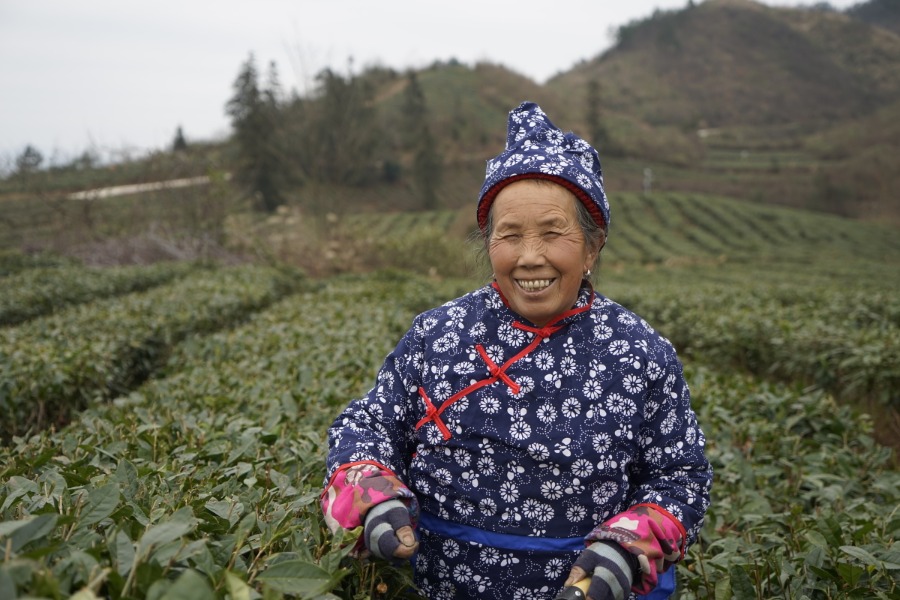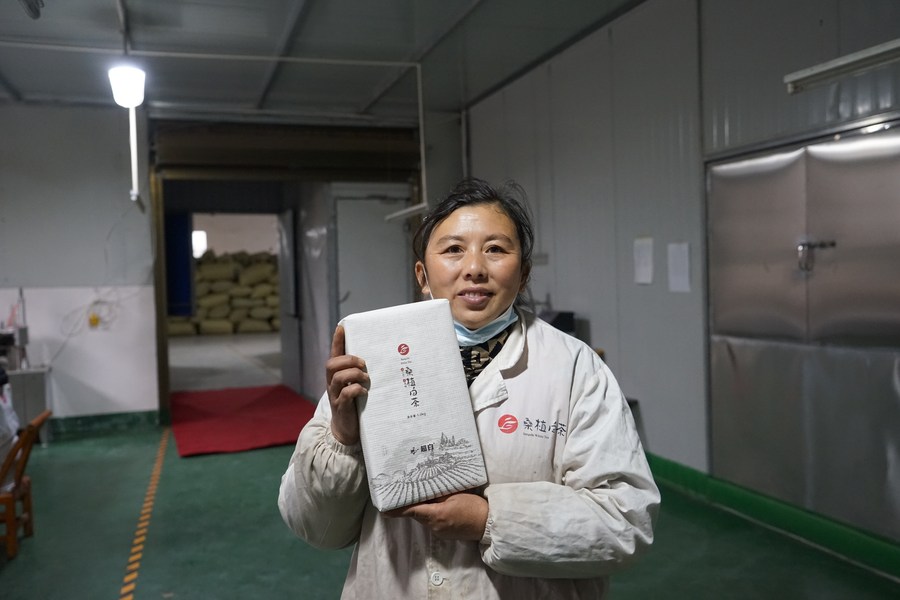
A farmer picks tea leaves at Sangzhi County, central China's Hunan Province, on Dec. 16, 2020. About 35,000 people working in the county's tea industry have risen out of poverty. (Xinhua/Zhang Dan)
by Xinhua writers Yuan Quan, Zhang Dan, Quan Xiaoshu
CHANGSHA, Dec. 24 (Xinhua) -- Geographical indication (GI), a type of trademark commonly used in global food and wine markets, is now helping farmers in central China battle poverty.
Sangzhi County, in the city of Zhangjiajie, Hunan Province, is known for its distinctive pillar-like peaks and precipitous cliffs that featured in the movie "Avatar". With a population of 470,000 and 28 ethnic groups, it was once home to some of the poorest areas in China.
In past decades, many local people left their rural homes to find work in big cities. Only a few stayed in the villages to grow corn or potatoes for a living.
Since 1995, the National Intellectual Property Administration has helped to fund poverty alleviation projects in the county.
One of the highlights was using GIs to raise locals' incomes.
A GI is a sign to show a product has a specific geographical origin and possesses qualities or a reputation due to that origin. It can be seen as a quality guarantee, which distinguishes them from their competitors.
Benefits of GIs include standardized processes, increased production and more employment for locals.
Research by intellectual property staff found the poverty-stricken region had rich GI resources, such as tea.
Abundant water and mild temperatures make Sangzhi County suitable for growing white tea. A tradition among the Bai ethnic group, white tea has a history dating back to Yuan Dynasty which ruled China from 1271 to 1368.
Faintly sweet, the tea was found to have anti-inflammatory functions, but it did not draw much attention in the market.
Before 2012, the tea plantation area in the county was around 1,333 hectares. Poor sales disappointed many local enterprises and farmers.
In 2017, the administration began assisting local tea companies to obtain a GI. Two years later, Sangzhi White Tea was listed as a protected product of China's national geographical trademark.
Since then, the tea industry has developed fast, with more factories and improved production and is now planted over more than 5,200 hectares. The tea leaves are processed in 46 enterprises and the output value was 228 million yuan (about 34.8 million U.S. dollars) in 2019.
More farmers are involved in tea production and marketing. The standardized production process provides guidance for farmers and reduces production costs. About 35,000 people working in the county's tea industry have risen out of poverty, said Zhao Yunhai, head of Sangzhi County.

Local farmer Li Yanping shows Sangzhi White Tea, a protected product of China's national geographical trademark, at a tea factory in Sangzhi County, central China's Hunan Province, on Dec. 16, 2020. (Xinhua/Zhang Dan)
Li Yanping is among them. In 2010, a car accident left her husband paralyzed and her family one of the most impoverished in her village, relying on government aid.
Li has worked at a local tea company since March, selecting tea leaves, and she can earn up to 4,000 yuan a month. It also allows her to have time with her 16-year-old child and bedridden husband.
She is very happy in the work: "I can support the family by my own labor, rather than by handouts."
The success of the GI-based approach in Sangzhi is also clear in "zongzi leaves," raw materials for Chinese glutinous rice dumplings, or zongzi, as well as sushi.

Workers process zongzi leaves at a poverty-relief workshop in Sangzhi County, central China's Hunan Province, on Dec. 16, 2020. A total of 40,000 farmers, including some with disabilities, have been employed in the business, helping 12,000 people cast off poverty. (Xinhua/Zhang Dan)
With administration assistance, Kanghua Reed Leaves Co. obtained a trademark for the leaves in August. A total of 40,000 farmers, including some with disabilities, have been employed in the business, helping 12,000 people cast off poverty, according to the county authorities. Some large factories are exporting their products.
The administration has launched 21 projects to promote GI application in poverty-stricken regions since 2019, benefiting more than 600,000 people in these areas, said Gan Shaoning, deputy head of the administration, at a press conference in November.
Shi Peng, a poverty-alleviation official sent by the administration to Cangguanyu Village in Sangzhi County in 2017, is happy to see more smiling faces and less poverty.
GI industries will make further contributions to the revitalization of China's countryside, Shi said. ■



